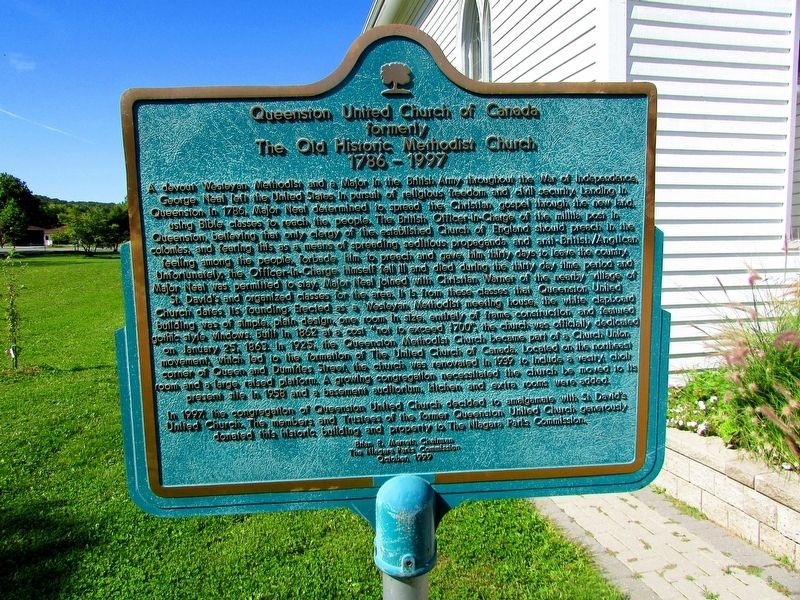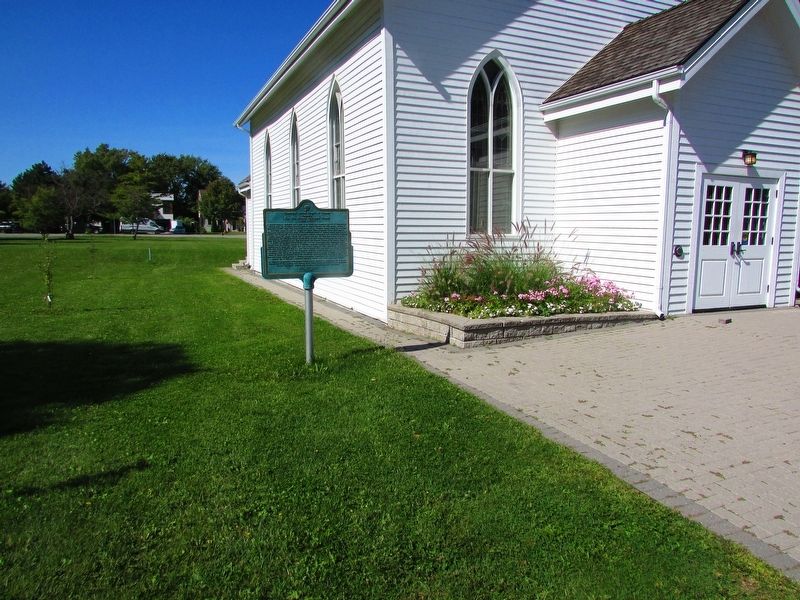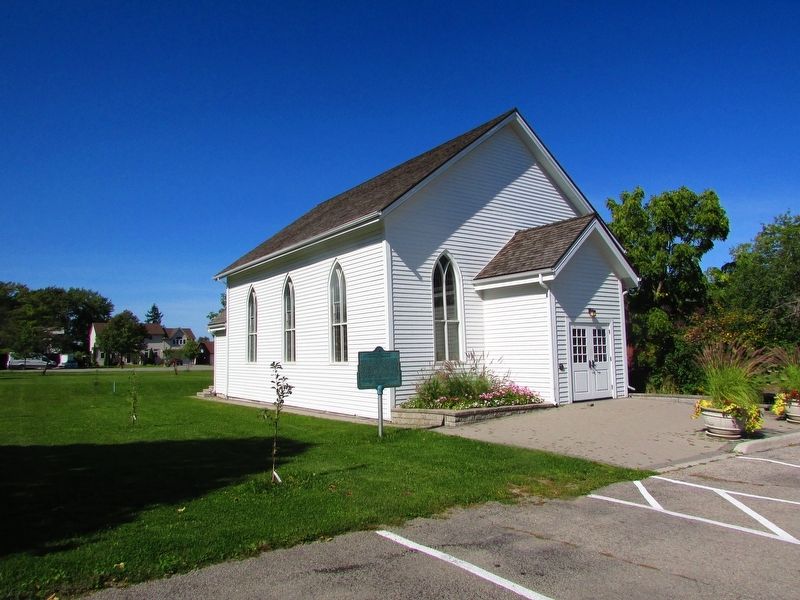Queenston in Niagara Region, Ontario — Central Canada (North America)
Queenston United Church of Canada
formerly The Old Historic Methodist Church
— 1786 – 1997 —
A devout Wesleyan Methodist and a Major in the British Army throughout the War of Independence, George Neal left the United States in pursuit of religious freedom and civil security. Landing in Queenston in 1786, Major Neal determined to spread the Christian gospel through the new land, using Bible classes to reach the people. The British Officer-in-Charge of the militia post in Queenston, believing that only clergy of the established Church of England should preach in the colonies, and fearing this as a means of spreading seditious propaganda and anti-British/Anglican feelings among the people, forbade him to preach and gave him thirty days to leave the country. Unfortunately, the Officer-in-Charge himself fell ill and died during the thirty day time period and Major Neal was permitted to stay. Major Neal joined with Christian Warner of the nearby village of St. David’s and organized classes for the area. It is from these classes that Queenston United Church dates its founding. Erected as a Wesleyan Methodist meeting house, the white clapboard building was of simple, plain design, one room in size, entirely of frame construction and featured gothic style windows. Built in 1862 at a cost “not to exceed $700”, the church was officially dedicated on January 25, 1863. In 1925, the Queenston Methodist Church became part of a Church Union movement, which led to the formation of The United Church of Canada. Located on the northeast corner of Queen and Dumfries Street, the church was renovated in 1939 to include a vestry, choir room and a large raised platform. A growing congregation necessitated the church be moved to its present site. In 1958 and a basement auditorium, kitchen and extra rooms were added.
In 1997, the congregation of Queenston United Church decided to amalgamate with St. David’s United Church. The members and Trustees of the former Queenston United Church generously donated this historic building and property to The Niagara Parks Commission.
Erected 1999 by The Niagara Parks Commission, Brian E. Merrett, Chairman.
Topics. This historical marker is listed in this topic list: Churches & Religion.
Location. 43° 9.837′ N, 79° 3.367′ W. Marker is in Queenston, Ontario, in Niagara Region. Marker is at the intersection of Partition Street and Niagara River Parkway, on the left when traveling east on Partition Street. Touch for map. Marker is at or near this postal address: 29 Queenston Street, Queenston ON L0S 1L0, Canada. Touch for directions.
Other nearby markers. At least 8 other markers are within walking distance of this marker. Laura Secord (1775-1868) (within shouting distance of this marker); Laura Ingersoll Secord 1775-1868 (within shouting distance of this marker); Home of Laura Ingersoll Secord (about 120 meters away, measured in a direct line); The Founding of Queenston (about 150 meters away); Brock Dead House (about 150 meters away); The Queenston Baptist Church (about 150 meters away); 'Alfred' (about 210 meters away); Indians at Queenston Heights (about 210 meters away). Touch for a list and map of all markers in Queenston.
Credits. This page was last revised on October 2, 2019. It was originally submitted on September 21, 2019, by Bill Coughlin of Woodland Park, New Jersey. This page has been viewed 195 times since then and 16 times this year. Photos: 1, 2, 3. submitted on September 21, 2019, by Bill Coughlin of Woodland Park, New Jersey.


